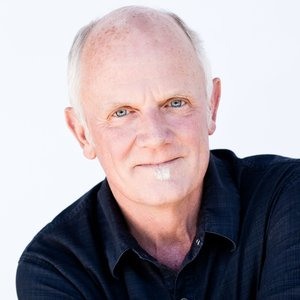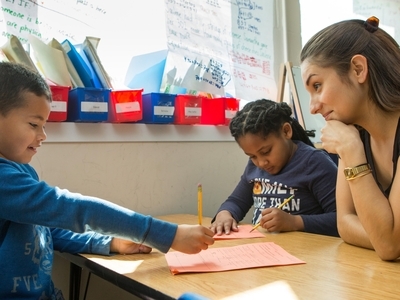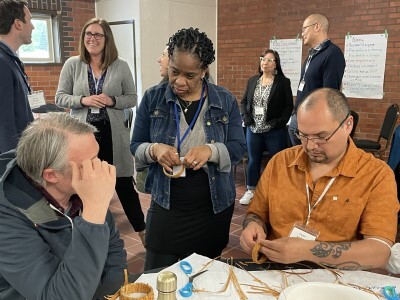Transforming Learning Is a Journey. Here Are Some Essential Lessons So We Can Treat It Like One!
Topics
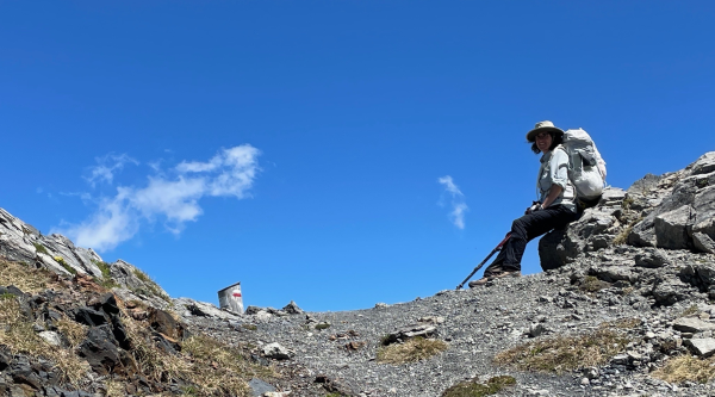
Next generation learning is all about everyone in the system—from students through teachers to policymakers—taking charge of their own learning, development, and work. That doesn’t happen by forcing change through mandates and compliance. It happens by creating the environment and the equity of opportunity for everyone in the system to do their best possible work.
Eight metaphors from a long and challenging hike through the Pyrenees offer essential lessons for transforming learning in schools and districts.
When I was in graduate school, my ethnography professor, Joseph Maxwell, had us read a small book by George Lakoff and Mark Johnson called Metaphors We Live By. It transformed how I saw my world and my life. I had already developed the idea of experiential metaphors from the many years I had spent working for Outward Bound, the wilderness program that helps young people and adults confront their capabilities and develop their self-confidence through powerful experiences individually and in teams (“crews”) in the ambivalent but undeniably real learning environment of the wilderness. Experiential metaphors are ideas about life that arise while one is involved in some challenging physical activity, such as Outward Bound curates for its students. Lakoff and Johnson write: “In actuality we feel that no metaphor can ever be comprehended or even adequately represented independently of its experiential basis.”
I described my feelings about experiential metaphors in an earlier essay, written after a long walk in Scotland in 2019, this way:
“The rhythms of long days of walking ease the mind into a delightful shuttle between the necessities of route finding and careful foot placement in crossing bogs and the expansive capacity of the mind to roam imaginatively among all the possibilities it can explore as the body explores the terrain. These little essays, then, are my attempt to capture some of that intriguing liminal space between our experience of walking through this spectacular landscape and the roaming of my mind in the process.”
This past summer my wife, Jessica, and I took another long walk, this time 250 miles in the Pyrenees, along the Pyrenean High Route (HRP) and the GR-10, one of the waymarked trails that criss-cross Europe and provide for many beautiful and challenging adventures for those who walk them. Along the way, as our legs, feet, and backs grew stronger and stronger from long days of walking between places where we could camp or stay the night, and from the high passes we needed to walk over on the way to the next place to stay, our minds would roam as I described above, but never so far that we could not keep paying attention to our feet, and what was at our feet, as we walked. That in and of itself is one kind of experiential metaphor. In this essay, I explore several experiential metaphors that can catalyze our understanding about the process of transforming our educational system to be more equitable and provide more powerful and meaningful learning experiences for our young people.
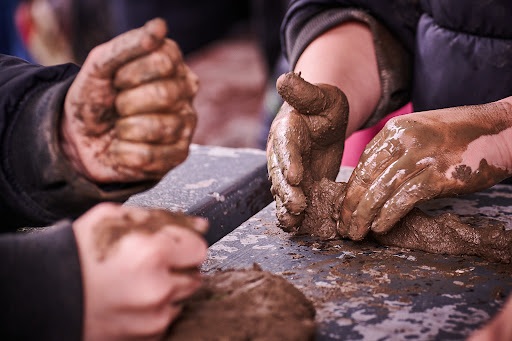
Credit: Abbotsford School District
Getting Started Is Hard and Starting Changes Everything
Metaphor One: Start. Each journey. Each day. Each moment. Each step. It’s always almost impossible to start. Do it anyway. Sore muscles will warm up and you will find a rhythm.
Metaphor Two: You can plan for the long haul, but the first step will change it all.
We started planning for our Pyrenees walk about a year in advance of our arrival in Hendaye, France, on the Atlantic Ocean and the border with Spain. We joined and participated in Facebook groups, we found web page descriptions crafted by previous trekkers, we Zoom called with a couple in San Francisco who had done both our previous long walk and the Pyrenean High Route, we bought special maps and GPS files, we spent months poring over the maps and marking our route, and we created spreadsheets for our gear and food needs. We planned out each day based on the descriptions, distances, elevation gain and loss, walking speeds, and places to stay described in the guidebook. And then we left Hendaye after dipping our toes in the Atlantic, eating one last spectacular seafood dinner, and camping overnight by the Atlantic, hoisting our heavy packs on our backs, and walking out of town following the guide book description. Two hours later, in the unprecedented 102 degree Fahrenheit heat, I was already drenched in sweat and overheating, and we were already “falling behind” the “scheduled” mileage for the day. We realized that everything would be different from what we had anticipated and planned for. We had started, taken our first steps, and now already we were unsure how our plan would help us keep going in this heat. We started each day, for the first week, following the plan but uncertain, hesitant, doubtful of whether we could actually do this route we had so enthusiastically planned for. And then we stopped, to rest, recover, and reassess what we had planned and what we actually wanted to do.
You know the Doris Lessing quote: “Whatever you're meant to do, do it now. The conditions are always impossible.” We turned out to be much slower than our guidebook said we would be, and the trail much harder. That was hard for us to accept at the start. But in the long run, starting, starting our own journey, starting our own day, starting our own moment, starting each of our own steps, led to warming muscles and a rhythm we could joyfully participate in, with an appreciation for the beauty of the terrain we were walking through, even if each step up and over many a high pass was incredibly challenging, and some of the days were much longer than we wanted them to be.
What I learned about the journey of transforming learning from this experience is that the longer you sit around planning, the more attached you can get to those plans, the harder it will be to start, and the longer it will take to recognize and accept that once you actually start, everything will be different. Not that you should start without any idea or vision of what you want to do or where you want to go or how you want to get there. And it is really fun poring over maps and gear lists and making plans—even strategic plans (the story of this one is notable)! But realize what Paul Berman said in his chapter in a book written in 1981, Improving Schools: Using What We Know, by Rolf Lehming and Michael Kane: “Change typically involves an implementation-dominant process [um, in part that means, to change, you have to do something!]… Events occurring after the adoption of a technology [an innovation, a design, a plan] determine outcomes to a large extent, and these events cannot be accurately forecast from the content of the technology itself.” Or, using systems theory terminology, the initial conditions of the system affect the outcome much more significantly than any inputs into that system.
Dave Snowdon, the original creator of the Cynefin framework, believes that when we are leading in the complex domain of system change, we will learn more and be more effective as a leader if we “probe, sense, and respond.” That is, try little “safe to fail” experiments that give us a sense of the misty territory we are entering, thus helping us determine the correct route, at least for the present. We are often more attached to spending six months developing a new strategic plan with a linear, causal model for implementation and benchmark and outcome measures to determine success, or spending a year designing a new school. The problem is, once the actual students arrive, we will discover that everything changes.
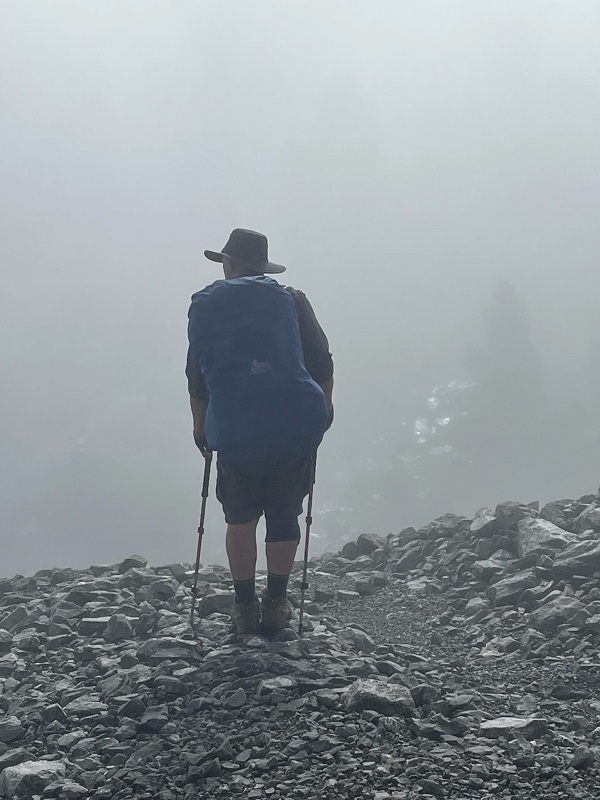
Test Your Conditions So You Can Respond to Them
Metaphor Three: Each step is an experiment, a hypothesis. Take it with awareness and curiosity. So place your feet tentatively, testing each rock to see if it is stable or if it is rocking under your feet. Respond accordingly! If the rock rolls under your feet, be ready to step quickly to the next one. If it’s solid, celebrate that fact. Few are.
Rocky trails, even those that were very carefully built by (we felt) heroic trail builders, have many loose rocks on them, and along those trails, no matter how well crafted they are, each step was still ours to take. The trail builders couldn’t walk the trail for us. All that was in our minds as we climbed out of the high valley where Refuge Jeandel was situated in a mist so dense we could see only a few feet of trail in front of us. We climbed up through limestone karst formations, etched and eroded by acidified rain, but because of the mists we could see them only as ghost shapes rising around us. The trail of loose rocks wound in and around these ghosts, terrifyingly close to sinkholes where the rock had collapsed into deep caves that had eroded down through the karst. Sometimes we clambered up steeper sections with cables to hang onto. Sometimes the rocky trail was easy to find and other times it just seemed like boulder fields leading off into nothingness. Yet we knew there was a pass we were headed toward, and we took each step hoping it would add up to our eventually climbing over that pass, even if we couldn’t see it.
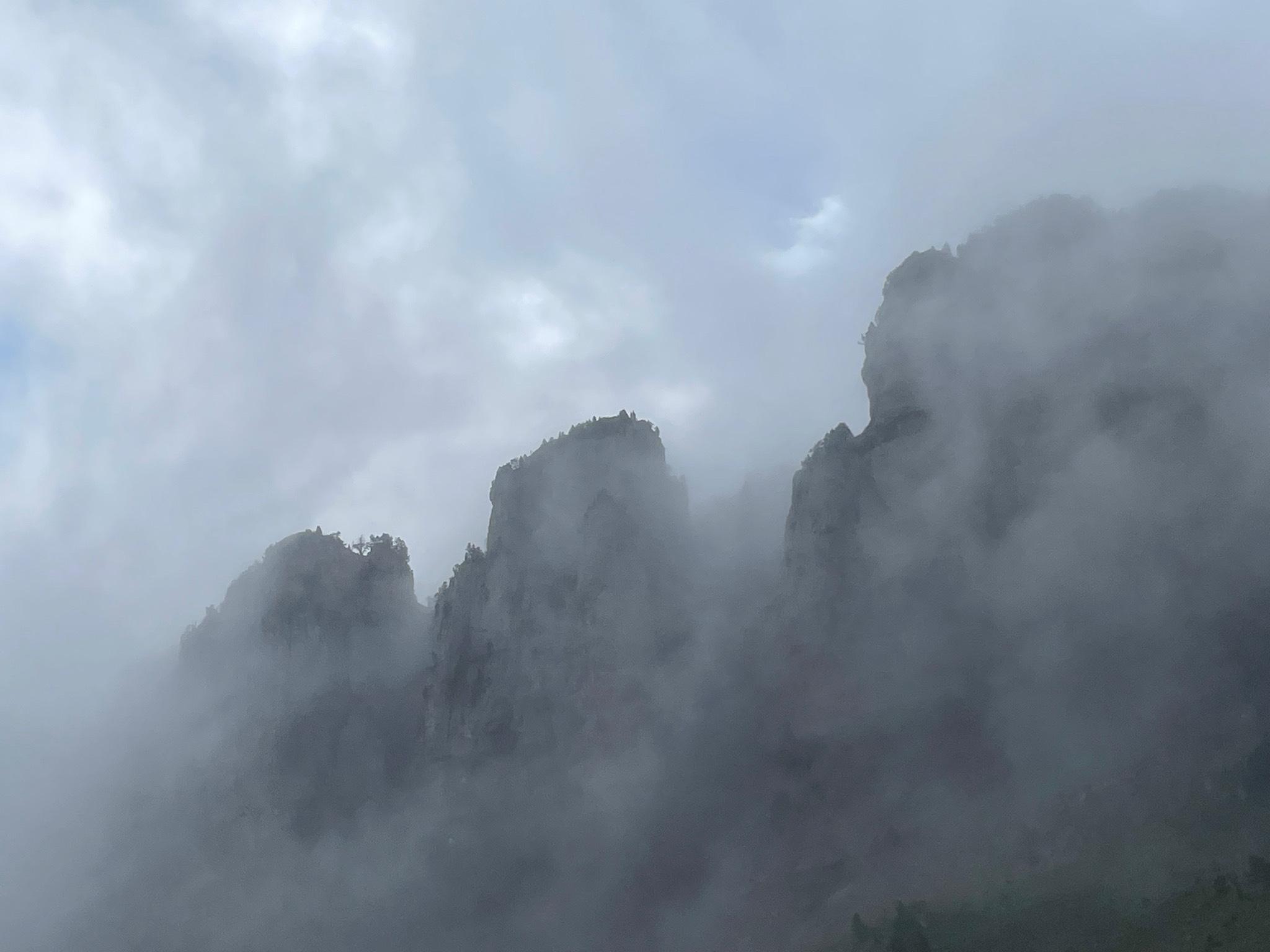
When we enter the complex territory of transformational learning, every step is an experiment. We think we’ve planned for it, and we hope it will take us forward to the next step, and the next, and eventually to achieving something of value. And we hope our companions along the way will be able to step with us, also experimentally, carefully, and also arrive at the “pass” with us. But this kind of travel through complex change in support of equity and deeper learning is, as I wrote above, about little steps that are safe to fail experiments that add up to getting where we want to go. This is how good teachers teach each unit, each day, each class, each moment, watching carefully how their students respond and revising as they go. The same can be said of a school’s progress, or a district’s. Develop the skills and habits of mind of taking each step experimentally. We may find we'll get to the passes more quickly than what we originally thought might be more efficient methods.
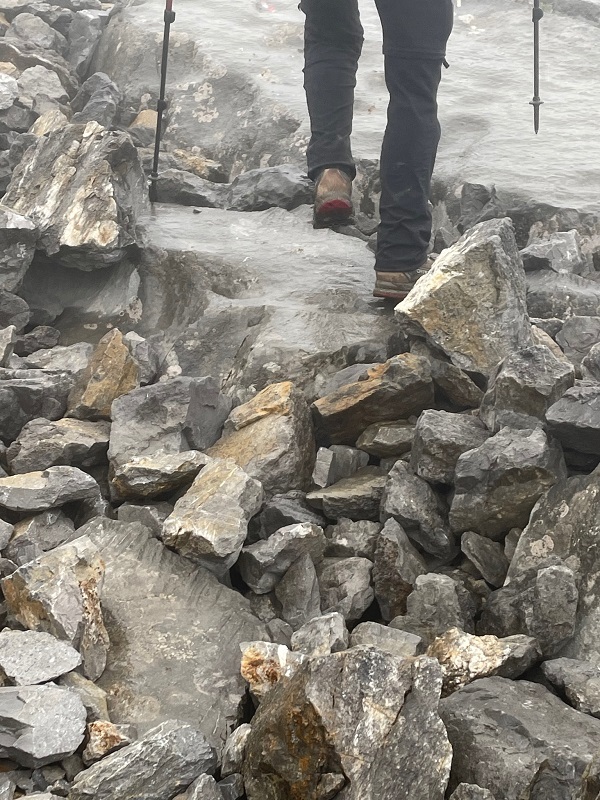
Enjoy the Journey
Metaphor Four: Dreaming of the summit, and continually counting the gaps between where you are and where you need to get, even if you can see it ahead of you, will be exhausting and demoralizing. Also, don’t try to rush ahead thinking you can get there faster; don’t “cut the switchbacks.”
“Slow is smooth and smooth is fast,” it says at the beginning of the U.S. Army Field Manual. Most passes in mountains carved by glaciers have several false passes before the final one, since the glaciers carved out the higher bowls and deposited the rubble in successive terminal moraines, as the glacier either advanced or receded. We looked ahead to a series of these coming up the long route from Gabas toward the Hourquette d’Arre, one of the most challenging passes along the GR-10, but we kept counting the distances, 23 kilometers that day, up and down to the next town, and elevation, 1,500 meters elevation gain. “Surely we must be near the top! Surely there is only a little more to climb up!” we said to each other and silently to ourselves as the trail continued to climb and climb, and we became more and more tired out.
And as the trail got steeper nearer to the top, we could see eroded places where other trekkers had grown impatient and cut across the switchbacks that were built to help make the seemingly interminable upward climb a little easier on quads and hamstrings, and keep the vulnerable alpine meadow terrain in place. Those eroded cuts were frustrating to those of us who needed the regularity of the switchbacks to help us continue in our upward rhythm, and very hard on the landscape. The more we focused on that we were not there yet, the more we focused on wishing we were and thinking about what it would be like when we got there. We then had less energy for the very important next step we had to take, our breath, our pace, our rhythm of walking. We had less energy to see what was actually happening around us that was beautiful, even the tiny little flowers growing between the rocks as we stepped over them, when we were so tired we couldn’t even look up to see the spectacular mountain landscapes opening all around us.
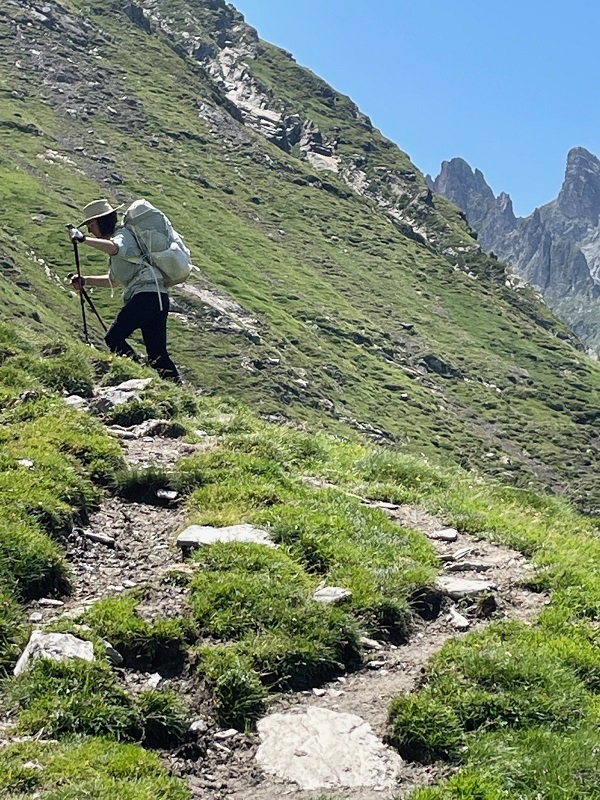
We spend an awful lot of energy and argument in education about “gaps.” We measure them interminably. And we spend a lot of time talking about what the “outcomes” will be when we close those gaps. What are we missing in the experiences of learning along the way? Everywhere around us learning is happening, growth is happening, that of young people and that of adults. Everywhere there is amazing and exhausting effort, and the joy of daily walking the challenging route we have chosen. And it takes all of our energy just to craft and skillfully stay in the daily steps of the learning we are doing along the way. Let’s not miss that by dreaming of the summit or creating negative thinking about how we have not yet made it to the summit we want to reach, and then by trying urgently and exhaustingly to rush ahead.
Metaphor Five: Don’t think that your reward will be the place where you arrive at the end (of a pass, of a day, of a week, of a...) and because of that miss the joy, beauty, wonder, challenge, exhaustion, of each step along the way.
This metaphor is a slightly different take on focusing too much on “getting there.” We still need to take each step, and everyone who is going with us needs to take each step themselves, in order to get to the pass and down to the next campsite. If each step is not in some way a reward for us, and if we have not been able to pay attention to it, in all its complexity of feeling and experience, in the long run our journey will not turn out to have been worth the effort we and our fellow travelers put into it.
Surely this is the same for our learning and teaching adventures! Surely it is the same for the transformations we want to support in our educational systems! What is the experience we want our young people to have now? What is the experience we as an adult in an educational system want to have now? What is keeping us from focusing our energy and efforts on those experiences? What displacement of that passion and desire onto some distant reward can we rethink and place where it belongs?
Listening Multiplies Possibilities
Metaphor Six (Version A): Talk to as many different people (and kinds of people) as you can along the way. You’ll never know what you might learn that will be helpful (and their stories are always unique)—listen to what they have to say!
Metaphor Six (Version B): Talk to as many different people (and kinds of people) as you can along the way. Their stories will surprise you and illuminate all the diversity of ways to make sense of and take this journey.
We started thinking we were walking this path as a couple, by ourselves, determined to get from the Atlantic to the Mediterranean. We knew there would be others we would meet along the way, but we had no idea how important talking with them would be. When we first discovered that the trail we had started on (the Pyrenean High Route, or HRP) was too hard for us, we felt discouraged. We thought this was the trail we were committed to walking, and when it turned out to be too hot, too high, too long each day, too much elevation gain and loss for us, we felt lost as to what to do next. But we were smart enough to know something was not working. So we stopped, and we started talking with people.
One young woman taught us how to make electrolytes from readily available items in the markets, to replenish minerals lost to sweating in the heat of the first days. Another pair of hikers told us about the route we thought we were going to be taking, having just come that way themselves, and that conversation convinced us to feel better about shifting our route to the GR-10. Others told us about how they were taking the overall trail in sections, ten or so days at a time. Or other loops and other trails entirely. Others recommended resting spots they had discovered, campsites near little towns where we could wash our clothes and replenish our supplies as well as restore our tired bodies. Travelers shared what foods they were and were not carrying and what they had gotten rid of that they discovered they didn’t need, thus lightening their loads to what was essential for them.
As Shane Safir describes in The Listening Leader, listening is key to educational transformation for equitable deeper learning. And listening to the most diverse array of fellow travelers creates a pattern of “micro-narratives” that will help us see that there are many, many more possibilities for how to do this difficult work than we could possibly have conceived of by ourselves, and many more ways of defining success along the way. Some we will agree with, and some will be so different we could not have imagined all the ways we might travel. In fact the conflict among these approaches engenders the frictions that are necessary for the collective learning that leads to success. Shane describes two kinds of listening, empathetic listening and strategic listening. One builds the trusting relationships we want among the full range of people who are on this transformational path with us, and the other develops a shared commitment to strategy for accomplishing the work. Both are essential. And these narratives all count as evidence of learning and success as well as guidance for how we might move forward.
When we start to see all of those stories, our sense of our own journey through the complex territory of transformation for equitable deeper learning will expand, and we will begin to see more possibilities in our own pathway. That will loosen our sense that there is one way for us to walk this path. Or one amount of time. Or one destination. Or even one path.
Metaphor Seven: Lighten your load. You are probably carrying too much. Keep asking what is essential to carry. But maybe also add a few small items you find along the way that will bring you joy.
Beyond the stories we heard that helped us with difficulties and strategies, we heard many stories about what people loved about their experiences, and what joy and redefined sense of purpose they experienced when they got rid of things that they were carrying that weighed them down, whether those were extra gear they did not need, or attitudes and beliefs about their trekking that kept them from fully enjoying and participating in their own journeys. We also heard about what little things had given them pleasure along the way, such as stopping on the way up to a high pass to swim in a cold lake. And of course, commiserating about being tired and having sore feet, and what they did about that.
Listening that unveils multiple possibilities and the need to lighten our loads weave together to make a bigger point: our conversations ranged across the wide landscape of topics that transcended our individual country borders and individual pathways to explore a larger world of ideas and experiences. What we gained was a sense of flexibility, that there were multiple pathways and ways of walking that we could follow, that we could craft our own way through these amazing territories, and that it was a more easeful journey when we carried less. And just the company of fellow travelers and the tales they told created a sense that this was a community project, and not just the two of us. Their stories knitted together into a tapestry of experience, not just a linear pathway that might seem monotonous, or even not possible to do. Listening and lightening: this is indeed “the simplicity on the far side of complexity.” We were all in this together, and we were all buoyed up by the stories each of us contributed to that common space.
Transformation for equitable deeper learning is a community project, and we are all in it together. Listen to and capture the stories of all those who want to travel with us in this project. It is a rich tapestry more than a linear trail. Find what is essential in the stories, lighten your load, and enrich your journey. As adrienne maree brown says,
“[E]verywhere there is complex, ancient, fertile ground full of potential. We… organize with the perspective that there is wisdom and experience and amazing story in the communities we love… we… want to listen, support, and grow… we… understand that the strength of our movement is the strength of our relationships, which could only be measured in their depth.”
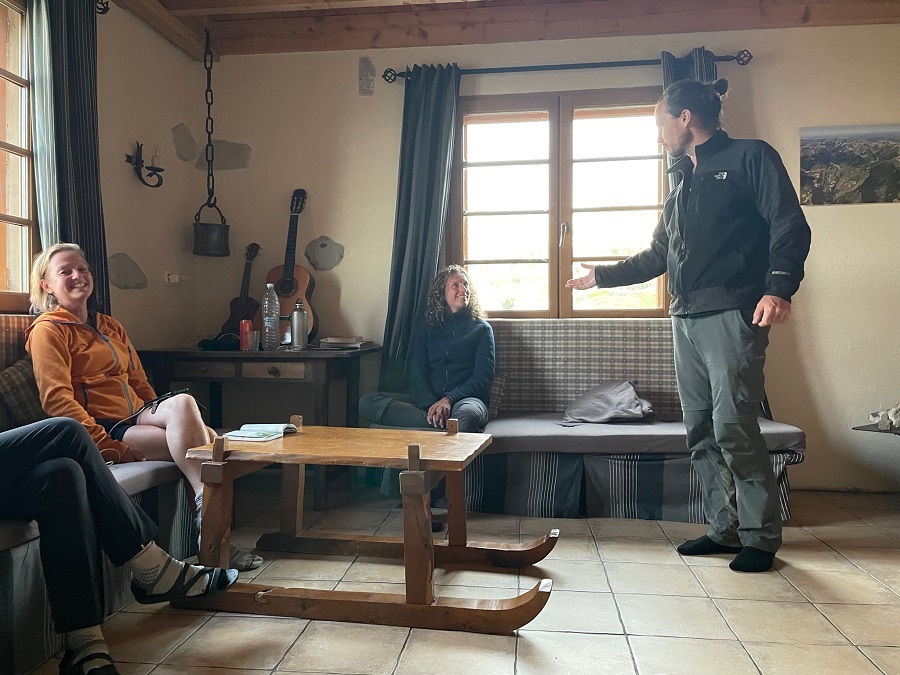
Say Yes and Lift Up Young People’s Passions
Metaphor Eight: Say yes to your young people’s passions for their Journey. Start. Walk with them on it.
One morning toward the end of our long walk, on our way up to a grassy col, we passed two people sitting on a rock wall on an old dirt farm road shaded by large beech trees, open meadows on either side. After another hour or so of climbing, we stopped in the col for a snack, and a little while later they came up and stood at a distance, talking quietly and looking out over the large valley below us to the distant mountains. We “leap-frogged” with them for a couple of days, and then ended up sitting with them at dinner one night in a refuge where we were all staying. It was apparent to us that she was a young teenager, 12 years old she told us, and he was her dad. She said she had gotten interested in hiking the GR-10 when she was seven, and had asked her dad if they could do it. He said yes without hesitating. And so they started that year, with an age-appropriate section of the trail. Each summer they returned, and hiked a slightly harder and longer stretch. They expected to finish the whole trail by the time she was 18. They were both passionate about this journey they were on together, and they had both been committed to starting it when she was seven, and they were passionate about and committed to starting again each summer with the new stretch.
I couldn’t help thinking what would have happened to this young person’s passion if her dad hadn’t shared in her passion and supported it. What if he hadn’t thought she could start this adventure when she was seven? What if he hadn’t even heard her say she wanted to, or encouraged her, or provided her with the opportunity to start? What if he had been passionate about the GR-10 and had convinced her to do it with him even if she wasn’t passionate about it?
So, how does this metaphor (and maybe some of the others) relate to our school transformation journey? Start. Listen. Listen to the young people in our schools right now, and look for the joy, beauty, wonder, challenge, and exhaustion they are experiencing by exploring their passions… And start! Right now! Encourage them in each step of the learning journey they are taking or want to take right now. Provide the resources and the guidance they may need.
On the other hand… Stop! We must stop thinking that our experience, our passion for our transformation journey as a district or school leader or even as a teacher, will either trickle down to others (especially students) or that there is some sequence by which we can start with ours and eventually it will become theirs. Other people can have (and some may already be having) these experiences now. So… We must stop looking for some mechanism (curriculum adoption, pacing guides, benchmark assessments, mandating teaching methods, etc.) to translate our experiences into theirs in some linear way. Start looking for where they are already fellow travelers along with us, or on their own journey. And lift those up.
Follow change activist Meg Wheatley in this regard: listen, notice, name, nurture the passions of our pioneers, connect them, illuminate what they are doing so others can see and be inspired to begin their own journey. Many of our pioneers may be—probably are—the young people in our schools! Walk this pathway with our young people and teachers together. But remember that each of us must walk this pathway with our own steps. In our own ways.
Our rightly felt sense of urgency should not make us fall back on old ideas about controlling the transformation process we want to see, thinking that control means efficiency, and efficiency means quick results. That’s a deadly formula for a toxic and dehumanizing culture. Our sense of urgency should drive us to start looking for and lifting up the kinds of passionate expeditions our young people may already be starting on, or are ready to start on, but we didn’t even know were happening because we were lost in an old mode of thinking about what a leader should do with their sense of urgency.
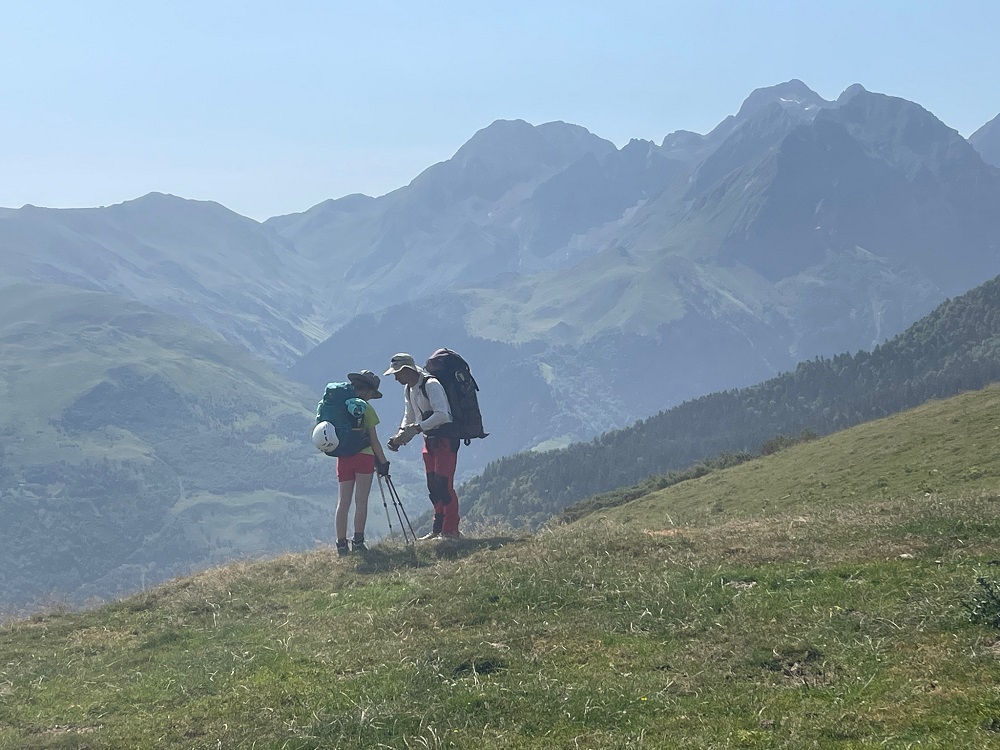
We all have had and continue to have experiences that provide metaphors for how we might act differently in our educational transformation work. These are windows into a new world. Let’s celebrate these experiences, learn to see the metaphors, and discover what they might mean for our practice.
Except where noted, photos courtesy of John Watkins.

